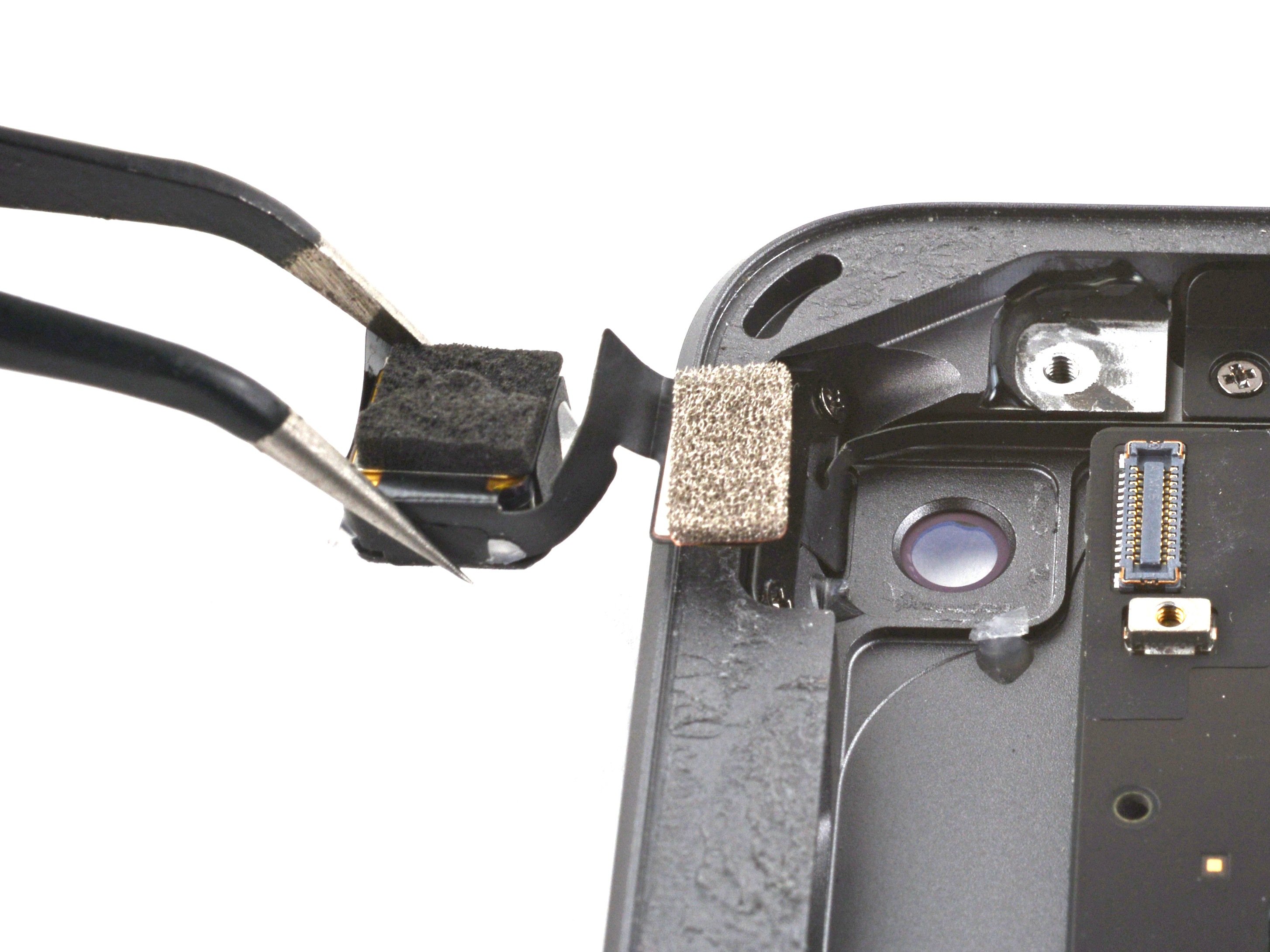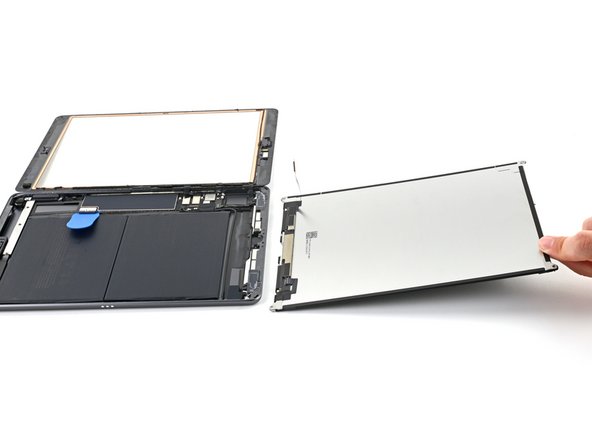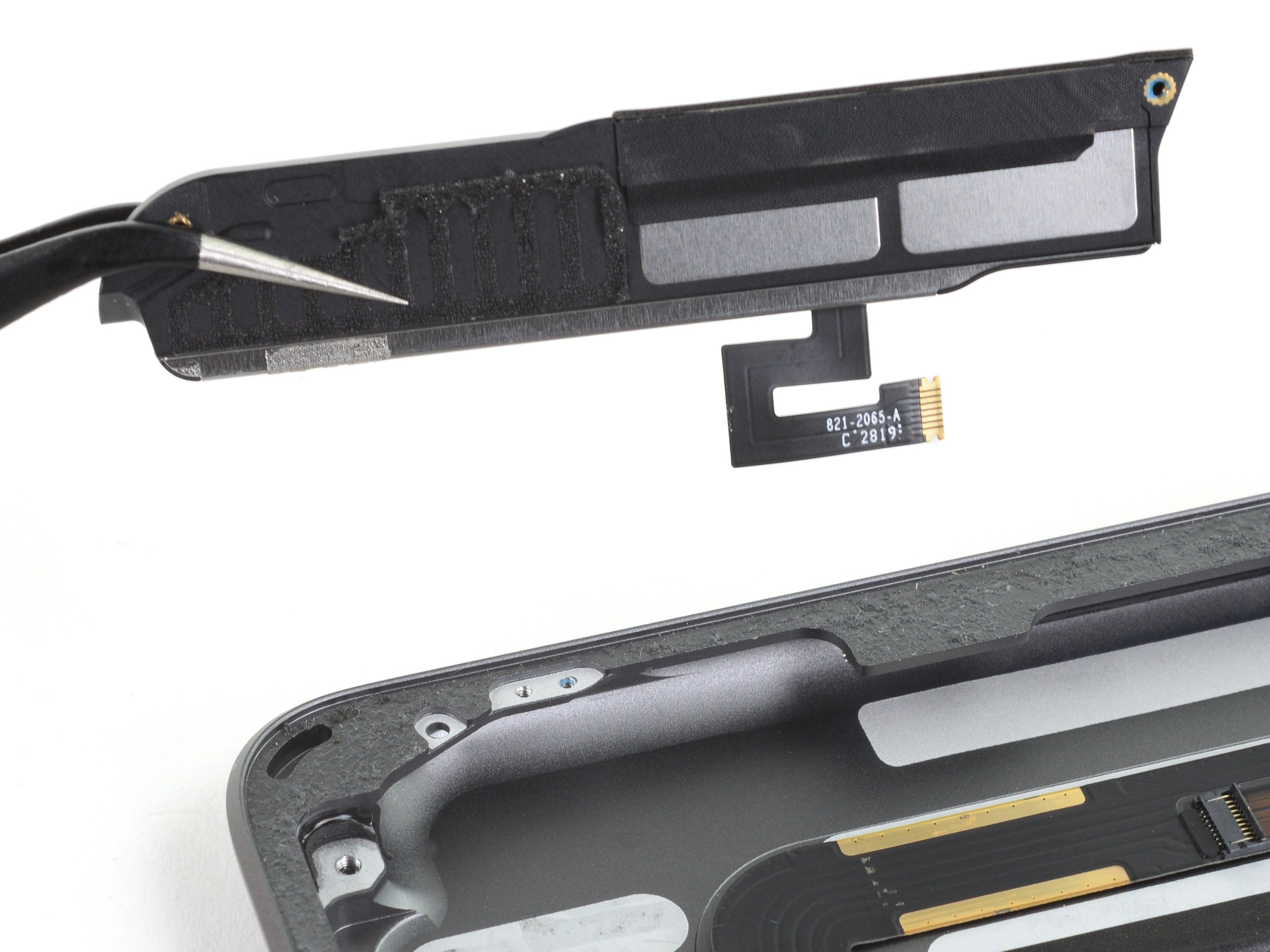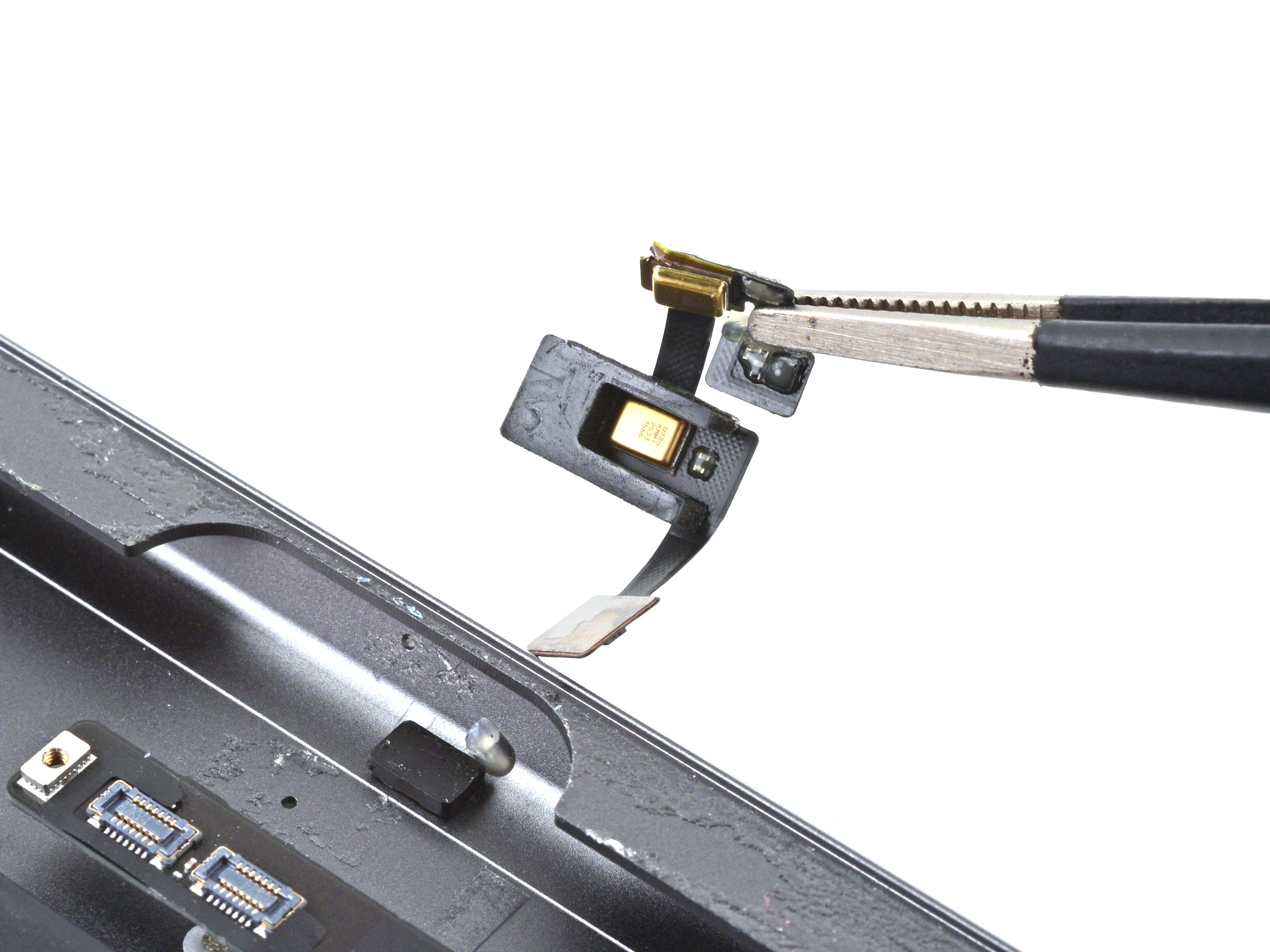iPad 8 Rear Camera Replacement
Duration: 45 minutes
Steps: 48 Steps
Hey there! Just a friendly reminder to make sure your battery is below 25% before diving into the disassembly of your iPad. Safety first, right?
Follow this guide to swap out the rear camera on your iPad 8 Wi-Fi model. Heads up: this is for the Wi-Fi version only; if you’re working on the LTE model, click here. Before diving in, make sure your battery is charged below 25%—this helps lower the chance of fire if the battery gets damaged during the repair. If your battery looks swollen, take extra care. When using a battery blocker to disconnect the battery, be super gentle—the contacts can bend or break easily, which is a one-way ticket to device trouble. If you decide to skip disconnecting the battery, avoid metal tools unless absolutely necessary (like for screws) to prevent short circuits and damage to delicate parts. Some pictures might be from a slightly different model, but don’t worry—they won’t throw off the steps. If you hit a tough spot, you can always schedule a repair!
Step 1
- Warm up your iOpener and place it on the left side of your device for a solid two minutes. Let that heat do its magic!
Tools Used
Step 2
- While the adhesive is working its magic and loosening up, take a moment to remember the following spots that might be a little extra touchy when prying:
- Front camera
- Antennas
- Display cables
Step 3
The next three steps will guide you through using the Anti-Clamp, a nifty little tool we've designed to make opening your device a breeze. If you don’t have an Anti-Clamp on hand, no worries! Just skip down three steps for an alternative approach.
Looking for the complete scoop on using the Anti-Clamp? Check out this guide.
If your iPad's surface is feeling a bit too slippery for the Anti-Clamp to get a grip, just slap on some tape to create a better hold.
- Pull the blue handle back to release the Anti-Clamp's arms—this is your moment to shine!
- Place something under your iPad so it sits comfortably, resting perfectly between the suction cups. Just make sure it’s level.
- Position the suction cups near the center of the left edge—one at the top and the other at the bottom. They should be cozy but not too tight!
- Now, hold the bottom of the Anti-Clamp in place and give the top cup a firm press to seal the deal and apply suction.
Step 4
- Grab the blue handle and pull it forward to lock those arms in place.
- Give the handle a full 360-degree spin clockwise, or keep turning until the suction cups start to stretch a bit.
- Keep an eye on the suction cups to make sure they stay perfectly lined up. If they start to slip, just loosen them a little and realign the arms before continuing.
Step 5
Turn no more than half a twist at a time, then take a breather for a minute. Let the Anti-Clamp and some chill time do their magic.
Need the full scoop on how to use a hair dryer like a pro? Check out this guide for all the details!
If the Anti-Clamp isn’t making the perfect gap, no worries! Just apply a bit more heat and give the handle a gentle clockwise twist for half a turn.
- Take a breather for about a minute to let the adhesive loosen up and create a nice little opening for you.
- If your screen isn't warming up as much as you'd like, give it a gentle boost with a hair dryer along the left edge of the iPad.
- Slide an opening pick under the digitizer when the Anti-Clamp has made a cozy enough gap.
- Feel free to skip the next step.
Step 6
- Wait until the screen feels pleasantly warm to the touch, then stick a suction handle on the left edge of the screen, as close to the border as you can manage.
- Gently lift the screen with the suction handle, creating a small gap between the digitizer and the frame. Easy does it!
- Slide an opening pick into that gap you've just made, and you're one step closer to cracking this repair!
If your display is in bad shape, a quick fix is to cover it with a layer of clear packing tape to help the suction cup stick. Alternatively, you can use some strong tape instead of the suction cup if you’re feeling resourceful. If that doesn’t work, you can even try gluing the suction cup to the cracked screen – it’s not pretty, but it’ll get the job done!
Tools Used
Step 7
No stress if you spot the opening pick poking through the digitizer — just pull it out gently. The LCD should be safe, but leaving sticky adhesive behind can make things tricky later on.
- Slip a second opening pick into the gap you just made. It's like giving your device a little breather!
- Gently slide that pick towards the bottom-left corner. You’re aiming to loosen that adhesive without breaking a sweat.
- Once you're at the bottom-left, leave the pick in place to keep the adhesive from trying to seal up again. You're almost there!
Step 8
- If your opening pick gets glued down, try giving it a little roll along the edge of the iPad to keep peeling that adhesive away.
Step 9
- Gently slide your first opening pick up towards the top-left corner to loosen that sticky adhesive.
- Keep the pick wedged in the top-left corner so the adhesive doesn’t sneak back together on you.
Step 10
- Warm up an iOpener and stick it on the top edge of your device for a solid two minutes to loosen things up.
Tools Used
Step 11
- Gently twist the pick around the top-left corner to loosen that stubborn adhesive like a pro.
Step 12
Keep that pick away from the front camera! We wouldn't want to risk scratching the lens. Follow these steps to keep everything safe and sound.
- Gently slide the opening pick along the top edge of your device, but stop just before you hit the front camera—no need to mess with that little guy!
Step 13
- Gently pull the pick out so that just the tip stays wedged between the digitizer and the frame.
- Slide the pick just above the front camera to loosen the adhesive.
- Keep the pick near the right side of the front camera before moving on to the next step.
Step 14
- Slide that pick back in and shimmy it toward the top-right corner of your device to fully break free the top adhesive. You're doing great!
- Keep the pick snugly in the top-right corner to keep that pesky adhesive from sticking again. Nice work!
Step 15
- Warm up your iOpener and let it snuggle on the right edge of your device for a cozy two minutes.
Tools Used
Step 16
- Gently twist the pick around the top-right corner to loosen that stubborn adhesive and get things moving.
Step 17
The display cables hang out around the middle of the iPad. Once you’re about three inches from the bottom, it’s time to stop and take a breather. You're almost there!
- Grab a fresh opening pick and gently slide it down to the center of the iPad's right edge. You're doing great!
Step 18
- Warm up an iOpener and stick it on the bottom edge of your device for a solid two minutes to get things nice and toasty.
Tools Used
Step 19
Keep it cool and don’t spin the pick all the way around the corner—your antenna will thank you!
- Gently slide that bottom-left pick into the corner like a pro to peel away the adhesive.
- Keep the pick snug in that bottom-left corner before moving on to the next step.
Step 20
Be sure to slide the pick towards the home button, not away from it! Going the wrong way could risk damaging the antenna, and we definitely don’t want that. Take your time and keep it steady.
If you find yourself needing to glide the pick over this spot again, just take it out and pop it back in at the bottom-left corner to keep things smooth.
- Slide a fresh opening pick into the gap you just made at the bottom edge of your iPad.
- Gently glide the pick over the antenna, but halt just shy of the home button.
- Keep that pick to the left of the home button before you proceed.
Step 21
Be super careful and only slide that pick in about 1 mm—let's keep that right antenna safe and sound!
- Time to break open the seal! Slide your opening pick into the gap you just made.
- Now, gently work the pick under the home button and slide it towards the bottom-right corner. Be careful and make sure only the tip is sneaking between the digitizer and the frame.
Step 22
Slide the pick gently toward the home button—never away from it—to keep the antenna safe and sound.
If you need to slide the pick over this section again, just pop it out and slide it back in from the bottom-right corner. Easy fix!
- Slide the pick back in and gently nudge it toward the home button to fully loosen that bottom adhesive.
- Let the pick hang out just to the right of the home button before moving on.
Step 23
- Warm up your iOpener and press it against the right edge of your device for a solid two minutes.
Tools Used
Step 24
Take it slow here—there’s no rush! Make sure the adhesive is nice and warm, soft to the touch. Use your pick to carefully separate the adhesive. If it’s giving you trouble, don’t hesitate to pause and reheat it. Patience is key!
If you're feeling some serious resistance, just give the edges a little extra heat and gently work your way along them with an opening pick. Patience is key, so take it slow and steady.
- Gently twist the two opening picks into the left corners of your iPad to lift the digitizer just enough. This will separate the last bits of adhesive without breaking a sweat.
Step 25
- Gently lift the left side of the digitizer to loosen the adhesive along the right edge of your iPad. This should make it easier to separate.
Step 26
- As you hold the digitizer steady, gently slide an opening pick between the two display cables to break free the last bit of adhesive. You've got this!
Step 27
- Once you've carefully separated all the adhesive, gently open the digitizer like a book and lay it down flat next to your iPad.
- As you put things back together, take a moment to clean off any leftover adhesive from the frame (and the digitizer if you're reusing it) using some isopropyl alcohol. Then, stick it back together with fresh adhesive strips or pre-cut adhesive cards.
- When you're reassembling, keep an eye on those display cables. Make sure they’re tucked neatly beneath the LCD screen to avoid any unnecessary damage.
Step 28
- Grab your trusty Phillips screwdriver and loosen up the four 4.3 mm-long screws holding the LCD in place on the frame.
- Keep those screws organized! Trust us, it’ll save you a headache later when everything needs to go back just where it came from.
- Peel away any tape covering the LCD screws so they don’t get lost in the shuffle.
Step 29
Hold your horses! Don't go yanking that LCD off just yet; it's still hanging on by a flex cable.
- Grab your trusty spudger and use the flat end to gently lift the LCD just enough to get a good grip with your fingers.
- Now, carefully flip the LCD like you’re turning a page in a book—start near the camera and let it roll over towards the home button end.
- Place the LCD on a soft, clean surface that's free of lint, so you can easily access those display cables without any hassle.
Tools Used
Step 30
- Grab your Phillips screwdriver and carefully unscrew the 2.3 mm-long screw holding the battery connector to the logic board. Keep it safe!
Step 31
Check out these shots to see what the battery connector looks like hiding under the logic board. Keep these images handy as a guide while you carefully unplug the battery.
Heads up: the battery connector has cantilever springs on the logic board that press against the battery contact pads. Since both the logic board and battery are glued down, you'll want to gently slide something thin and bendy between those contacts to safely disconnect the battery.
Step 32
Handle the battery blocker with care—those battery contacts are delicate and can bend or break easily, causing damage you won’t be able to fix.
Make sure the battery blocker logo is facing up – it’s like a little sticker with a purpose.
Don't go forcing that battery blocker under the connector. If it's being a bit stubborn, try slipping a playing card underneath to disconnect the battery gently.
The battery blocker (or playing card) should slide right under the logic board without hitting any snags. Once it's in, it should rest at a cool 15-degree angle.
- Gently slide that battery blocker under the logic board's battery connector, angling it at a cool 35 degrees. You've got this!
- Now, let that battery blocker chill in place while you tackle the next steps. Keep up the good work!
Tools Used
Step 33
- Grab your Phillips screwdriver and carefully unscrew the three tiny 1.4 mm screws holding down that display cable bracket. Steady hands for the win!
Step 34
- Grab some tweezers or just use your fingers to carefully lift off the display cable bracket. Simple as that!
Tools Used
Step 35
- Gently use the flat end of a spudger to lift and unplug the LCD cable press connector.
- When putting press connectors back together, line up one side carefully and press down until you hear a click, then do the same for the other side.
- Avoid pressing in the middle—if the connector is off-center, those tiny pins might bend and cause serious trouble.
Tools Used
Step 36
- Carefully detach the LCD and lay it face down on a clean, soft, lint-free surface. Give it some space and treat it like the delicate piece of tech that it is!
Step 37
- Grab your trusty tweezers and gently peel away the tape that's keeping the home button cable ZIF connector under wraps. You've got this!
Tools Used
Step 38
- Grab a spudger, an opening tool, or even your fingernail to gently flip up the tiny hinged locking flap on the home button cable ZIF connector. Easy does it!
Tools Used
Step 39
- Grab a trusty pair of tweezers and gently tug on that home button ribbon cable, pulling it straight out of the ZIF connector. You're doing great!
Tools Used
Step 40
Hey there! To keep your iPad safe and sound, make sure to pry gently right on the connectors themselves, avoiding the socket on the logic board. You've got this!
- Gently slide the flat end of your spudger under the two digitizer cable press connectors to pop them loose and disconnect them with care.
Tools Used
Step 41
Watch out! That home button ribbon cable is delicate—handle it gently to avoid any tears or punctures.
- Grab the flat end of your spudger and gently lift the vibration isolator hanging out near the bottom-right corner of the device.
- Go ahead and take that vibration isolator off.
Tools Used
Step 42
The home button cable is held in place with a bit of gentle adhesive.
- Grab your trusty tweezers and gently lift the home button cable away from the frame like a pro.
Tools Used
Step 43
Grab your opening pick and gently slice through any leftover adhesive still holding the front panel assembly to the frame—smooth and steady wins the race!
Keep in mind, without proper insulation, parts of the digitizer might short-circuit against other components, leading to wonky touch responses.
This insulation is sneaky—it’s invisible to the eye and not the same as the foam dust barrier strips you might find on several iPads.
- Take off the front panel assembly carefully.
- If your new display starts acting up with those weird "ghost" or "phantom" touch inputs, don't panic! You can fix this by sticking a super thin layer of insulating tape, like Kapton (polyimide) tape, on the highlighted spots on the back of the panel. Replacement digitizers already come with the right insulation, so usually no extra tape is needed.
- When putting everything back together, make sure to scrape off any leftover adhesive from the iPad. Give those glued areas a good clean with high concentration isopropyl alcohol (90% or more) and a lint-free cloth. This preps your iPad for fresh adhesive and helps it stick like a champ.
- Finally, test out all your iPad's functions. Then, use pre-cut adhesive strips on the back of the display following the display adhesive application guide before sealing it up tight.
Step 44
- Grab your trusty Phillips screwdriver and let's tackle those three 1.4 mm screws that are holding the upper component bracket in place. You've got this!
Step 45
- Grab your tweezers or just your trusty fingers to gently lift the upper component bracket off the frame.
Tools Used
Step 46
- Gently slide the flat end of your spudger under the rear camera press connector and carefully lift it to disconnect. Keep it cool and steady!
Tools Used
Step 47
- Warm up an iOpener and place it on the top-left corner of the iPad's back for thirty seconds. This will help loosen up that pesky rear camera adhesive like a charm!
Tools Used
Step 48
- Time to wrap things up! Just retrace your steps and put everything back together in the reverse order.
- Got some old tech lying around? Don't forget to take it to an R2 or e-Stewards certified recycler!
- Things didn't go exactly as planned? No worries! Try some basic troubleshooting, or swing by the iPad 8 Answers community for a hand.
-






























































































































